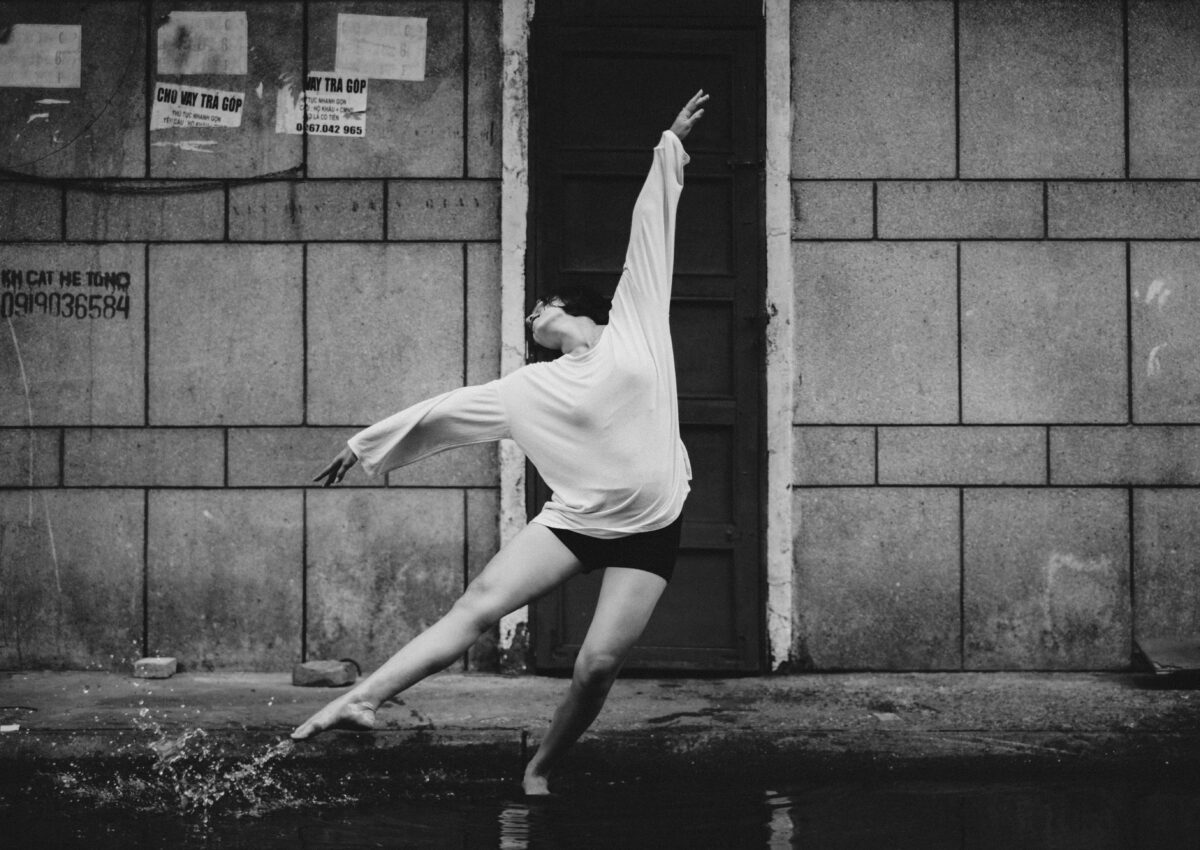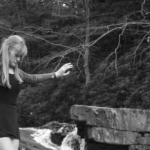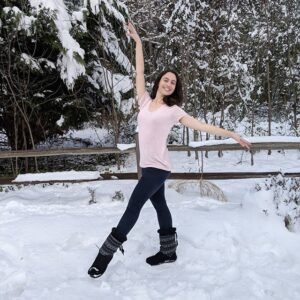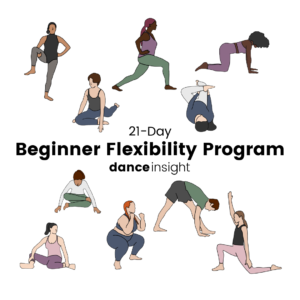
So you want to audition for professional dance jobs? You might be wondering what tricks you should be practicing. Now, as any good dance teacher will tell you, success at a dance audition isn’t all about the tricks. You do need to have mastered some basic skills, though, which is why I’ve compiled this list of the most common tricks at professional dance auditions.
This list came from my own observations and a casual survey of other professional dancers. I make no guarantees about what you will or won’t see at an audition! I don’t think you can go wrong with these tricks, though. They’re great ones to have under your belt either way!
Pirouettes
I don’t think I’ve ever been to a dance audition that didn’t have pirouettes in the combo. From theme park shows to ballet intensives to modern dance companies, you must be able to execute clean pirouettes to be successful at dance auditions.
Practice en dehors and en dedans, turned out and parallel, and in multiple types of shoes (flats, heels, pointe).
How to do a pirouette:
Calypsos
These flashy leaps demonstrate your “pop” off the floor, your technique and lines, and your overall control. Make sure you’re showing the audition panel a clean picture in the air and creating a smooth transition in and out of the jump.
How to do a calypso:
Floor Rolls
This seemingly simple step is much more than a transition movement. In a modern dance audition, they’ll be looking for your head-tail connection and efficiency of movement (no embellisments). In a commercial dance audition, they’ll be looking for a more upright posture and focusing on a smooth transition onto and off of the floor.
How to do a floor roll:
Transition Steps: Pas de Bourées, Triplets, Ball Changes, Chasses
Don’t overlook the little steps, as these are the big indicators of your technique. An experienced choreographer can tell your level of dance training just by watching you do a pas de bourée. So let’s use the pas de bourée as an example and talk about how to improve your technique. (This is for jazz pas de bourées, not ballet.)
- BACK-side-lunge. Get your footwork right. New dancers often form the bad habit of going lunge-back-side instead of back-side-lunge. The first step of a pas de bourée crosses behind!
- Pull up on a high relevé with legs squeezed together when you cross back. Stay on relevé for the step to the side. Then get a nice plié on your lunge.
- When you lunge, always put your foot down toe-ball-heel. Don’t put your foot down flat.
- Coordinate your arms. Keep them clean and sharp and make sure their movement is synced with your legs.
- Don’t move your upper body. You should remain lifted and poised from the waist up. Don’t lean towards the leg that lunges.
How to do a pas de bouree:
Battements, Developpés, Fan Kicks, and Tilts
I went to an audition once where they had us do battements across the floor, just the right side, and then immediately cut over half the group. Needless to say, not only are extensions very common tricks at dance auditions, but they’re one of the most important!
Two vital pieces of knowledge for extensions. 1) Yes, they do care how flexible you are. This is the professional dance world, and unfortunately, even if you have perfect technique, there’s someone right next to you who has perfect technique and can kick their face. I’d say a battement of 135 degrees (45 degrees above 90) or higher should be your goal.
2) They care even more about technique than they do about flexibility. You must be able to kick or developpé with a straight standing knee, pointed toes, square hips, and proper posture. Your foot should brush the floor in a battement or peel off the floor in a developpé, and then land with control toe-ball-heel.
Let me put it this way: there’s a possibility that you could get hired if you have great technique but mediocre flexibility. There’s no way you will get hired if you have great flexibility but mediocre technique. Ideally, you have both. So set those goals!
Standard battement combo that everyone should know:
Saut de Chats and Side Leaps
Two more essential tricks to show off your strength, power, and dynamics at dance auditions are saut de chats and side leaps. The choreographer will be looking for explosive “pop” off the floor, clean lines, controlled takeoff and landing, and full splits.
How to do a side leap:
Piqué Turns and Lame Ducks
Whether in a center combo or across the floor, piqué turns and lame ducks are very common tricks at dance auditions. Key aspects of technique to practice are:
- Piqué-ing onto a straight knee
- High relevé
- Keeping your upper body lifted (not leaning or wobbling)
- Clean, precise arms
- Pointing, but not sickling, the lifted foot
- Maintaining turnout (unless it’s a parallel turn, of course)
How to do a pique turn:
Jazz Walk/Sassy Struts, Salsa Step, Hip Work
In addition to technique, strength, and flexibility, the people sitting behind the table at professional dance auditions will want to see your personality! This part of the combo will usually involve hip work, arm gestures, “pose of choice,” or something a little less technical that’s more about “having fun with it.” Don’t write off this section of the combo! Depending on what kind of dancer they’re looking to cast, this might be the most important part of the audition!
How to do a jazz walk:
Improv
Okay, it doesn’t really count as a trick, but you’ll have the opportunity to improv at almost every professional dance audition you attend. Even if there isn’t a specific improv section of the audition, there will be a few counts of 8 leading up to the combo. It’s kind of an unspoken rule that you always improv from the moment the music starts to the first count of the combination.
Need help with your improv? I have some posts that might help:
What are the most common tricks at dance auditions, in your opinion? Anything you’d add to this list? Let us know in the comments!








One Reply to “The Most Common Tricks at Professional Dance Auditions (Jazz/Contemporary)”
Comments are closed.